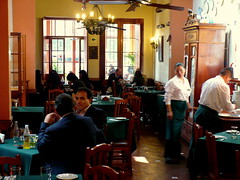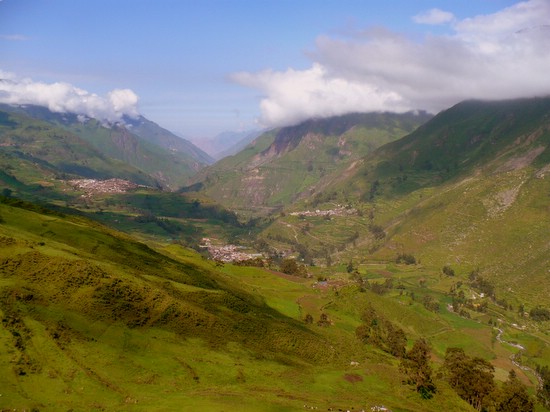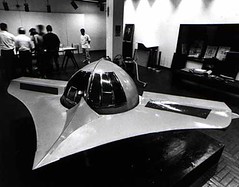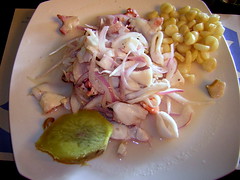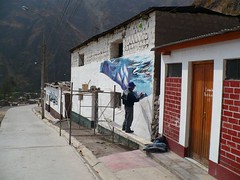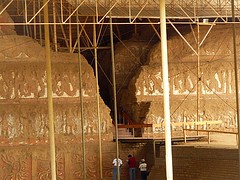Taulichusco, Lima’s Last Curaca
Part of the Lima PreColombina series
The Inca Empire had all but collapsed, the Inca capital of Q’osco had been conquered and a puppet emperor placed on the thrown. By following the Inca road from Jauja to Pachacamac, conquistador Pizarro was back on the coast with many of his men looking for a place to found his city. The choice was obvious… the green paradise spanning out from the river Rimac, a vast urban and agricultural area home to tens of thousands of indigenous who had transformed the desert with complex irrigation systems and who had constructed countless towering truncated pyramids that could be seen for miles around.
By-passing the extensive city of Maranga, Pizarro chose the south bank of the Rimac where the Inca curaca (local ruler) had his palace. Around a small square, this palace was joined by a pyramidal temple and a number of other small buildings. Behind the palace was the river Rimac and the start of the water channel that fed the city of Maranga.
The curaca was a man the Spanish named Don Gonzalo Taulichusco. This local ruler was the yanacón of Mama Vilo, one of Huayna Capac’s (Father of Atahualpa, Huáscar and Manco) wives while his brother was yanacón to Huayna Capac himself and still resided in Q’osco.
When Pizarro arrived, many of the tens of thousands of people who lived in what is now Lima fled, leaving behind only a few thousand more along with Taulichusco and his administrators. The Spanish met with Taulichusco and explained he was obliged to hand over the land that was to be the city of Los Reyes. Taulichusco was not stupid and knew full well that he had little choice but to agree and welcome the Spanish, and that it was to them he now owed his allegiance and must obey, just as before with the Incas in Q’osco.
He may have assumed that part of the deal involved he and his remaining people to leave the Rimac valley, as it was recorded that he defiantly told the Spanish that although they now own the land; “We will not disappear”.
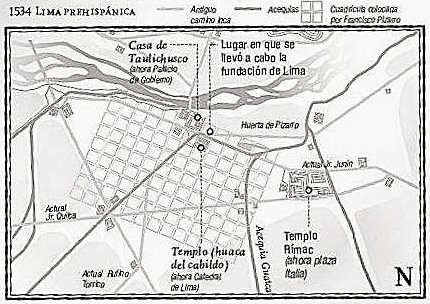
Layout of Los Reyes superimposed over original buildings. Dark lines show ancient water channels, light lines show Inca roads – many of which now form (outside of the central grid city layout) modern main roads.
This suited the Spanish just fine. They wanted to control the people and use their labour to build the new city Pizarro had planned out. Taulichusco’s palace was destroyed and Pizarro’s European style palace was constructed in its place. The nearby huaca was also destroyed and the Cathedral was built on its foundations, giving the modern building its raised height and steps leading to its entrance. The indigenous were rounded up and placed in Spanish style towns, leaving their cities like Maranga and Pachacamac abandoned. As the city expanded, a large temple complex was destroyed, replaced by the Plaza Italia.
Taulichusco, and other curacas across Peru, now worked for the Spanish and were the means by which to control the indigenous. They’re ayllu groupings were preserved – they reported to the curacas and the curacas reported to Spanish rulers.
The main job of Taulichusco was to collect taxes to pay to the Spanish. These exploitative payments were huge and near impossible to pay with so few people remaining in the valley. But just like with the Incas, there was no choice. Taulichusco had to borrow from the Spanish to pay their taxes, loans he eventually had to pay off by selling his people’s land.
15 colonial documents exist from between the years 1552 and 1562 that show, despite all he was forced to do for the Spanish, what a defiant and brave man he was. When he felt his people were mistreated he lodged complaints. Although not completely comfortable with the Spanish language he put various cases before the Royal Audience of Lima, and in 1562 sent a Spaniard to plead a case to the Indian Council and the King himself.
Dying on the 29th of August 1562, the curaca of Lima was buried in the Iglesia de la Magdalena, land he donated to the church in 1557.

Just off the Plaza de Armas, not far from where the Taulichusco lived and worshipped before the arrival of the Spanish, is one of the few signs of this man’s existence. Hearing his story centuries later, a Spaniard heard of the curaca’s story and erected a fitting monument. He placed a huge stone very heavy stone, of one of the toughest minerals around, in the Pasaje Santa Rosa with an inscription;
We will not disappear.
Tags: 1500s, colonial, curaca, huayna capac, incas, lima, lima precolombina, maranga, pizarro, rimac valley, spaniards, taulichusco, yanacón



